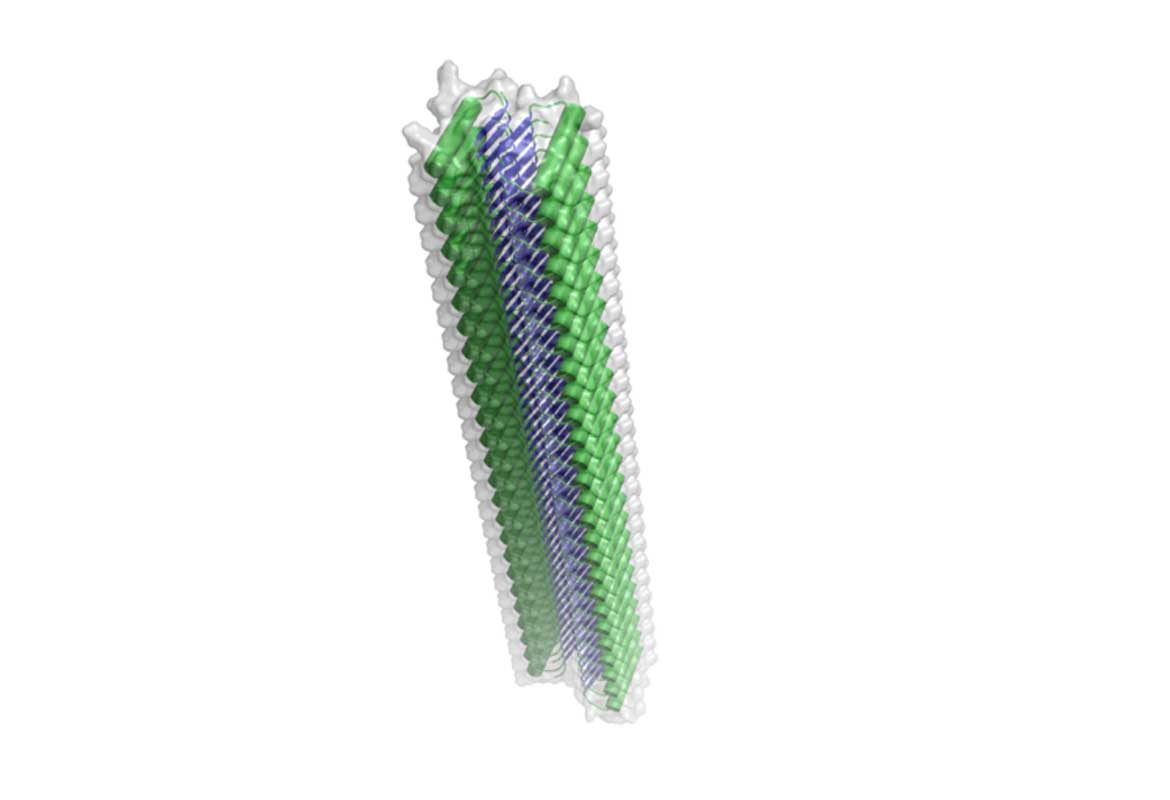
Computational de novo design of a self-assembling Peptide with predefined structure
Protein and peptide self-assembly is a powerful design principle for engineering of new biomolecules. More sophisticated biomaterials could be built if both the structure of the overall assembly and that of the self-assembling building block could be controlled. To approach this problem, we developed a computational design protocol to enable de novo design of self-assembling peptides with predefined structure. The protocol was used to design a peptide building block with a βαβ fold that self-assembles into fibrillar structures. The peptide associates into a double β-sheet structure with tightly packed α-helices decorating the exterior of the fibrils. Using circular dichroism, Fourier transform infrared spectroscopy, electron microscopy and X-ray fiber diffraction, we demonstrate that the peptide adopts the designed conformation. The results demonstrate that computational protein design can be used to engineer protein and peptide assemblies with predefined three-dimensional structures, which can serve as scaffolds for the development of functional biomaterials. Rationally designed proteins and peptides could also be used to investigate the subtle energetic and entropic tradeoffs in natural self-assembly processes and the relation between assembly structure and assembly mechanism. We demonstrate that the de novo designed peptide self-assembles with a mechanism that is more complicated than expected, in a process where small changes in solution conditions can lead to significant differences in assembly properties and conformation. These results highlight that formation of structured protein/peptide assemblies is often dependent on the formation of weak but highly precise intermolecular interactions.
